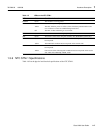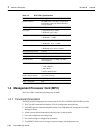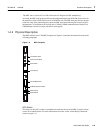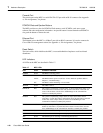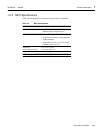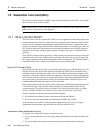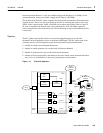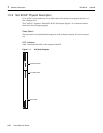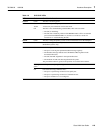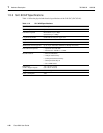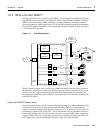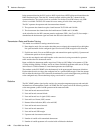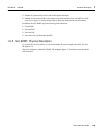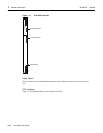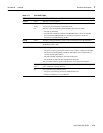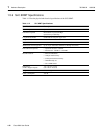
78-5296-02 10/02/98 Hardware Description 1
Cisco 6200 User Guide 1-27
1.5.4 What is the SLC 8DMT?
The eight-port DMT version of the SLC (SLC 8DMT) is a hot-swappable line module that provides
data communication between the Cisco 6200 node and up to eight subscribers. Modems on the SLC
8DMT use discrete multitone (DMT) modulation, a common method for encoding asymmetric
digital subscriber line (ADSL) transmissions. The SLC 8DMT transmits high-speed data through an
external POTS splitter to subscribers over existing, telephone-grade segments of copper wire. Figure
1-12 illustrates SLC operation.
Figure 1-12 SLC 8DMT Operation
The SLC 8DMT transports data at speeds up to 8 Mbps downstream (from the service provider to
the subscriber) and receives at speeds up to 800 kbps upstream (from the subscriber to the service
provider). The SLC supports upstream and downstream passband channels for subscriber data.
Baseband plain old telephone service (POTS) is unused by the SLC; voice and data are added by the
external POTS splitter.
How the SLC 8DMT Handles Traffic
In the downstream direction, the SLC receives ATM cells from the Cisco 6200 backplane bus. The
cell filter discards cells whose virtual path/virtual channel IDs (VPI/VCIs) do not pertain to a
particular subscriber’s channel. (Each port has a fixed set of 31 VCIs, numbered 33 to 63, which are
permanently assigned to VCIs on the NTC.) The cell filter buffers cells, and the DMT transceiver
transmits the outbound cells. The SLC sends the cells out to an external POTS splitter, which inserts
baseband POTS traffic (if any such traffic is provided) before sending the downstream ADSL and
POTS signals across standard unshielded twisted pair copper wire to the subscriber.
Cisco
6200
ADSL
modem
SLC
Port 1
Port 2
Port 3
Port 8
ATM
13068
Public
telephone
network
POTS
splitter
POTS
splitter
Contention
and
arbitration
Cell
filter
DMT
transceiver
NTC



